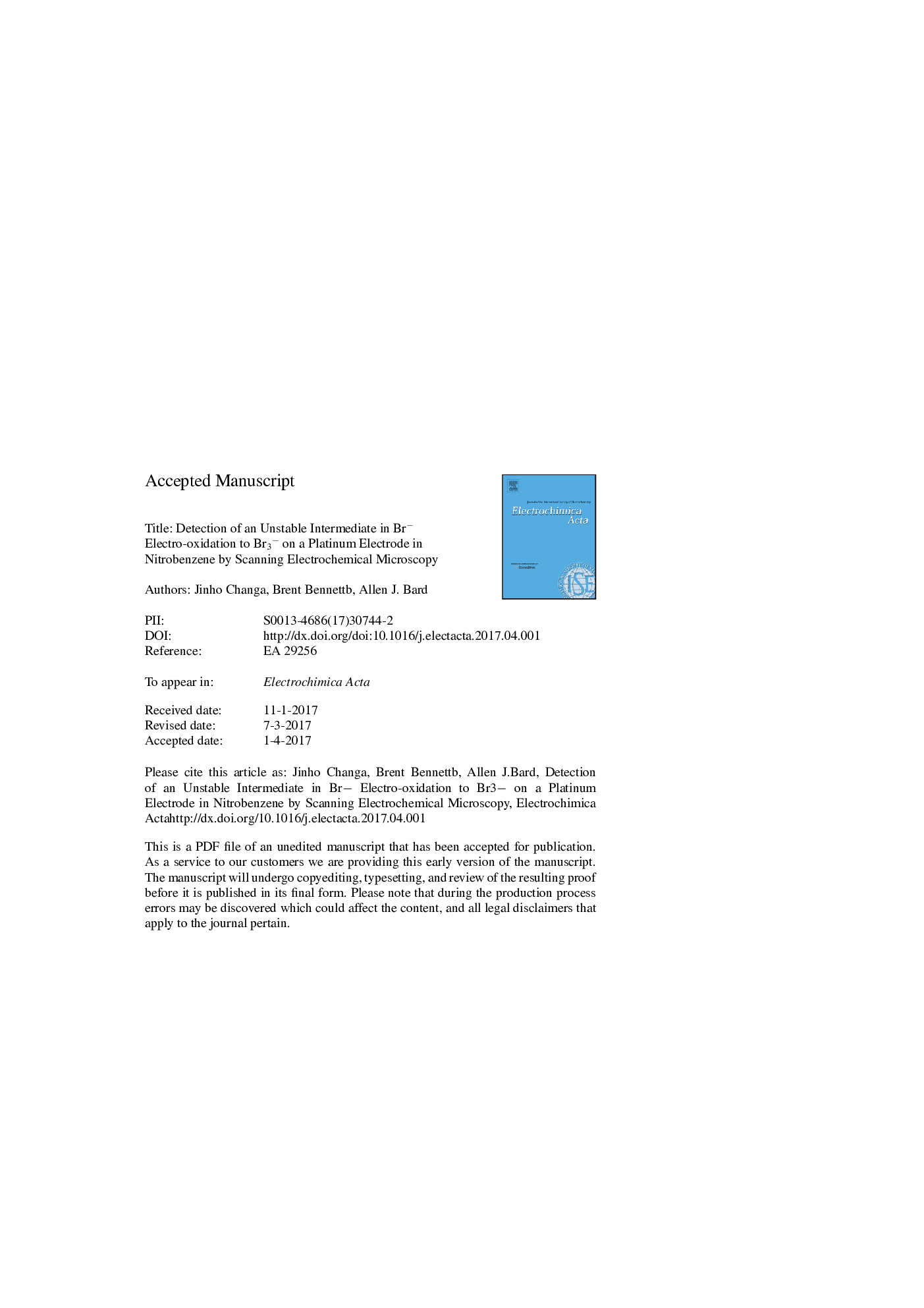| Article ID | Journal | Published Year | Pages | File Type |
|---|---|---|---|---|
| 4767167 | Electrochimica Acta | 2017 | 13 Pages |
Abstract
We report the detection of an unstable intermediate generated during Brâ oxidation to Br3â in nitrobenzene by scanning electrochemical microscopy (SECM), and we attempt to simulate the collection of the intermediate using a proposed mechanism of Brâ oxidation to Br3â. At a distance of â¼Â 3.5 μm between the tip and the substrate electrode in the SECM experiment, we observed two waves as we measured the collection efficiency, Nss, while holding the tip at an anodic potential and scanning the substrate toward cathodic potentials. The second wave obtained at more negative substrate potentials was associated with the collection of Br3â, and the first wave was associated with the collection of an intermediate generated in Brâ oxidation to Br3â. The Nss as a function of d, estimated at the constant substrate potential of 0.27 V vs. TMPD/TMPD+·, abruptly increased as d was brought below 2.5 μm. We simulated this approach curve by using the following mechanism of Brâ oxidation to Br3â: (1) Brâ + e â Br·, (2) 2Br· â Br2, (3) Br· + Brâ â Br2â·, (4) Br2â· + e â Br2, and (5) Br2 + Brâ â Br3â.
Keywords
Related Topics
Physical Sciences and Engineering
Chemical Engineering
Chemical Engineering (General)
Authors
Jinho Chang, Brent Bennett, Allen J. Bard,
